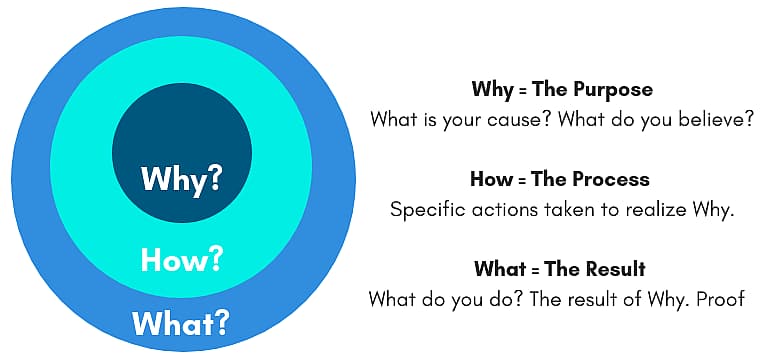Developing a social media budget that gets signed off.
06.03.2020
Social media organic reach is decreasing and social platforms have been putting systems in place that seek to monetise the efforts of brands to reach a wide audience and generate clicks. So getting value from social media marketing is becoming more of a pay-to-play sport. Unless you already have a highly active and engaged social community, your social media efforts will probably need to be supported with a budget. Developing a strong social media plan is also a critical part of a successful inbound marketing strategy.
Today, you have to think deeply about how you create valuable, engaging content and how you advertise it. This means you need a plan and a budget to achieve success, and this is easier said than done. There are many things to consider when trying to demonstrate the projected return on investment (ROI) of social media. Here are some tips on how to gain stakeholder buy-in and increase your social media budget or to get it signed off in the first place.

Develop your social media plan.
It is best to develop a budget after you have your social media plan mapped out. A social media plan can be for the whole company for the year, or a specific campaign for 6 months. Whatever the reason behind your social media plan, it should contain the following:
- What social content do you need to create?
- Will you need to hire freelancers or a digital, social, ad agency to help?
- What’s your ideal mix of organic and paid advertising?
- How much advertising do you think you will require?
- Are you considering paying influencers to promote your products?
- Do you have the right staffing for your plan?
- Which services and tools do you need? How much will they cost?
- How will you report on your success?
In your planning phase, you should try to fill out a social media calendar. This will likely need to be reworked a few times as you go through the process, but a rough idea will develop your thinking further.
If you want to take it a step further and add context to why you think your plan will work, conduct a social media audit on your current social media presence. This will help you identify where you have gone wrong and give you plenty of ideas to work with. Often we don’t take enough time to stand back and look at our work holistically, which is a very useful exercise.
In summary, your social media plan should contain: a social media audit, a list of content and how plan to create them, agency/freelance partnerships, your organic vs paid advertising approach, the cost of paid ads, your influencer strategy, your staffing plan, the tools you need and how much they will cost, and details on how you will report and track the performance of your social media efforts.
Conduct your research.
Next, you should gather industry data to back up your plan. Competitive analysis will give you something to aim for, plenty of ideas and will help you develop your style. It will also show you what not to do.
You need to know what is working for other companies in your industry and what is not. What language are they using? How much effort are they putting into the creative aspect? Which channels are they using? How often do they post and which types of content? If you can, find case studies from digital advertising agencies and see what’s working for other companies.
If the person or people you present your budget to are detail-oriented, you may want to spend some considerable time conducting research which further supports your social media plan. The benefits of spending more time on research are that you will be able to qualify your plan, build confidence in your approach and develop expertise on the ins and outs of social media advertising.
However, if your leadership team aren’t going to dig into the numbers and you think they will just want to see key facts and figures backed by a relevant case study, do not waste time. You should not become consumed by your research phase, but instead, get what you need to support your thinking and then conduct continuous research, either monthly or quarterly. This means you will keep the pace and continue learning over time.
Selling your social media plan to the leadership team.
With your research and social media plan in place, you should revisit your overall business goals. Senior leadership aren’t going to care about the details you care about; CTR, sentiment, shares and likes.
For your leadership team to get excited about your social media budget, you should focus on the following:
- New revenue generation avenues
- Cost savings and efficiency
- Gaining competitive advantage
- Protecting brand reputation
- Customer satisfaction

Simon Sinek famously said two things in his 2010 TedTalk which propelled him to fame in the business world:
“People don’t buy what you do, they buy why you do it.”
“The goal is not to sell to people what you have, the goal is to sell to people who believe what you believe.”
Apple doesn’t sell you on the specific functionality of their products, it sells you on why you need them. In 2017, when the iPad Pro launched, Apple used the slogan: “anything you can do, you can do better”, suggesting that the product helps you to achieve better results, improve your performance and make you better at what you do. That’s why people bought it. People want to be better. People don’t buy the 1.8% reflectivity or 600 nits brightness, they buy why these things are used – to make you better.
Executives care mostly about what will make or save them money. Your social media program must prove how they will make money or save money. You mustn’t start your pitch talking about what you are going to do, but why you are going to do it. Then, show them exactly how you will help them achieve their business goals. Finally, demonstrate the projected ROI and show them statistics and case studies to back your claim.
An example.
You are the Marketing Manager of a Professional Services business. Your customer satisfaction is dwindling and you want to improve it. You know that customers feel frustrated because they spend too long on the phone to find answers to their questions. Also, you know that a lot of your customers follow you on Twitter or Linkedin.
Next, you decide to build a world-class social media program for customer satisfaction. After looking at all your FAQs you realise that the top 5 can be solved or answered in a video format – in 2 minutes or less. You decide to turn each question into an animated, on-brand video but you know it might take £50,000 to make the video and another £10,000 to advertise/share the content via social media ads targeted at customers. You would also send them to your digital web agency to embed them on your site and link your customers to the videos when questions are asked on social media or via email.
Despite the cost, you know that it could reduce the number of calls to the call centre by up to 20%. Also, watching a short video that solves a query in a fraction of the time it takes for a call into a call centre will delight the customer.
By calculating the deflection cost and mapping that out over one year, you identify big cost savings. Your program is going to cost £60k but you expect to save the company £250k in year one. You decide this is a powerful argument to put across and book in a meeting to pitch your idea.
Risk-averse leadership team? Try this.
Another clever way to pitch your idea to the leadership team is to position it as an experiment.
- Start with your business goals, e.g. to increase revenue from referrals
- Explain your hypothesis and social media will help achieve those goals
- Demonstrate how you will test that hypothesis and for what duration
- Share the results back to the leadership team
This way you’ll have a modified budget for the experiment to prove value first, reduce risk and show that you’re thinking strategically about the business.
Business owners and senior leadership are more likely to sit up and listen when you can demonstrate the ‘why’ behind your plan. Remember: “People don’t buy what you do, they buy why you do it.”

